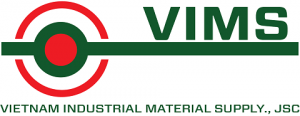Austenitic and super-austenitic stainless steel – M1.0-2.0
Definition
Austenitic steels are the primary group of stainless steels; the most common composition is 18% Cr and 8% Ni (e.g.18/8-steels, type 304). A steel with better resistance to corrosion is created by adding 2-3% molybdenum, which is often called “acid-proof steel”: (type 316). The MC group also includes super-austenitic stainless steels with a Ni-content over 20%. The austenitic precipitation hardening steels (PH) -steels have an austenitic structure in the solution heat treated condition and a Cr-content of >16% and a Ni-content of >7%, with approx. 1% Aluminum (Al). Typical precipitation hardened steels include 15-5 PH, 17-4 PH, 13-8MPH and 17/7 PH steel, as well as Nitronic 50, Nitronic 60, etc.

Common components
Used in components where good resistance against corrosion is required.
Very good weldability and good properties at high temperatures. Applications include: the chemical, pulp and food processing industries, exhaust manifolds for airplanes. Good mechanical properties are improved by cold working.
Machinability
Work hardening produces hard surfaces and hard chips , which in turn lead to notch wear. It also creates adhesion and produces built-up edge (BUE). It has a relative machinability of 60%. The hardening condition can tear coating and substrate material from the edge, resulting in chipping and bad surface finish. Austenite produces tough, long, continuous chips, which are difficult to break. Adding S improves machinability, but results in lowered resistance to corrosion.
Use sharp edges with a positive geometry. Cut under the work hardened layer. Keep cutting depth constant. Generates a lot of heat when machined.


Reviews
There are no reviews yet.